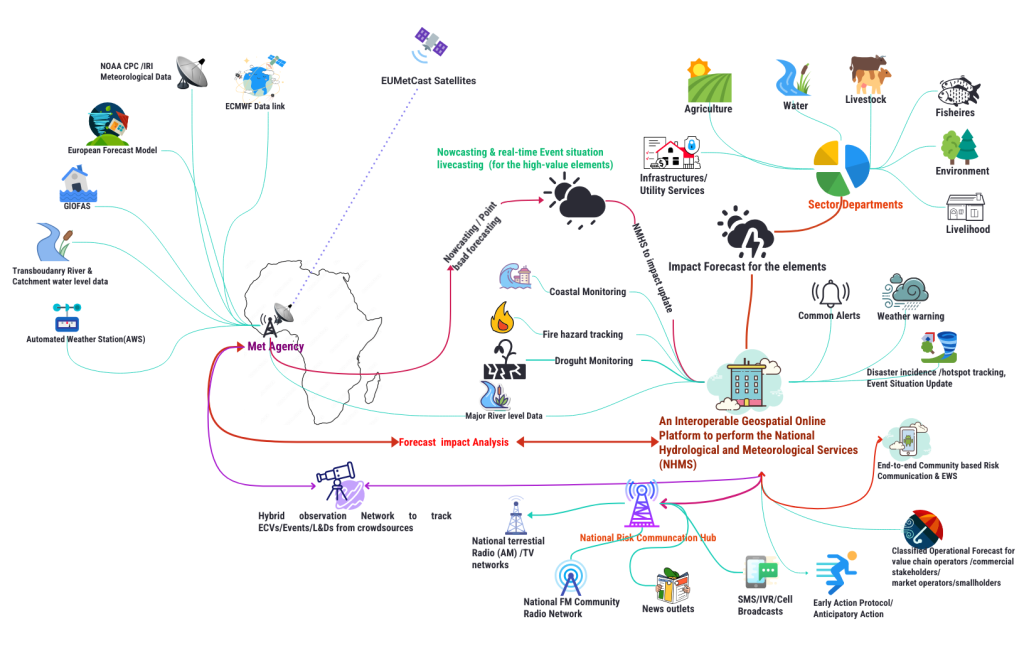The Multi-Hazard Early Warning System Design & Implementation Center (MHEWC) is envisioned as a global platform dedicated to the research, design, development, and implementation of end-to-end hydrometeorological Multi-Hazard Early Warning Systems (MHEWS), especially for countries in the Global South. Although MHEWS is an inherently complex task, the Center is at an early stage (voluntarily at the moment) of its journey, supporting new system installations, assessing existing operational capacities, and upgrading country-level NMHEWC systems into fully functional, interoperable, and integrated online platforms.
The geospatially enabled MHEWC platform strengthens the interconnectedness between climate-vulnerable sector agencies, diverse stakeholders, value chain actors, and frontline communities, enabling seamless interaction within a unified system. It supports the functionalization of integrated national hydrometeorological services (NHMS), enabling weather-impact forecasting by sector agencies, operational forecasting, standardized alerting, and real-time event updates.
Ultimately, the integrated NMHEWC framework aims to foster ICT-driven local risk-management governance. It empowers sector departments to conduct multi-hazard exposure, risk, and vulnerability assessments; develop risk repositories; remove data-exchange barriers across administrative levels; and deliver tailored risk-information management services to strengthen local climate resilience.
.
Simplified MHEWS design concept for African Countries

Designed & conceptualized by Z M Sajjadul Islam